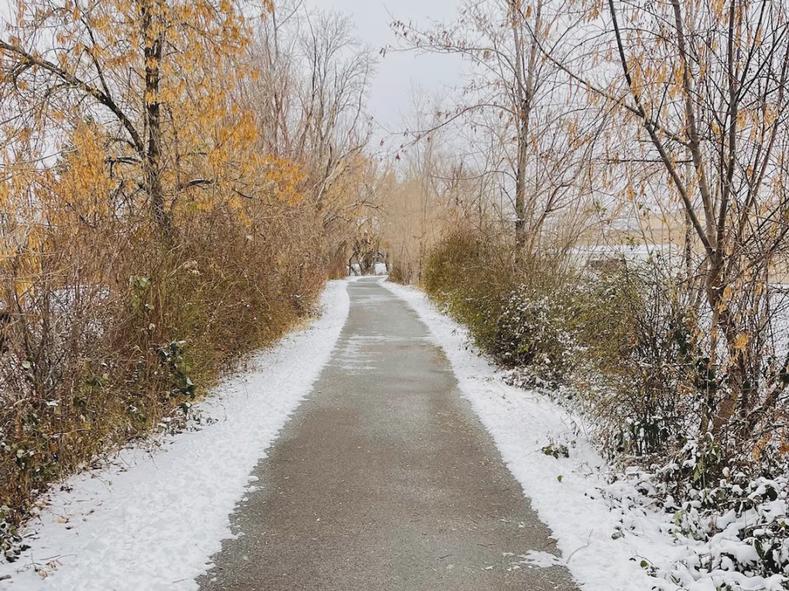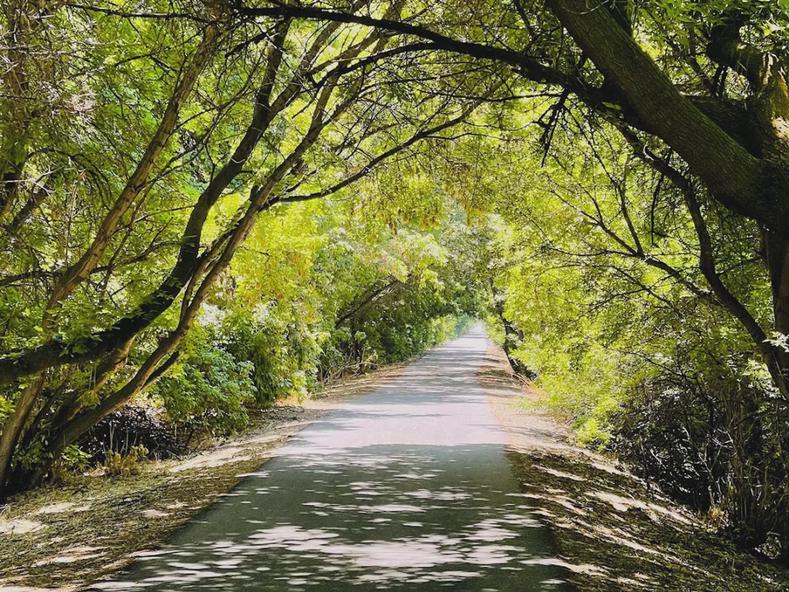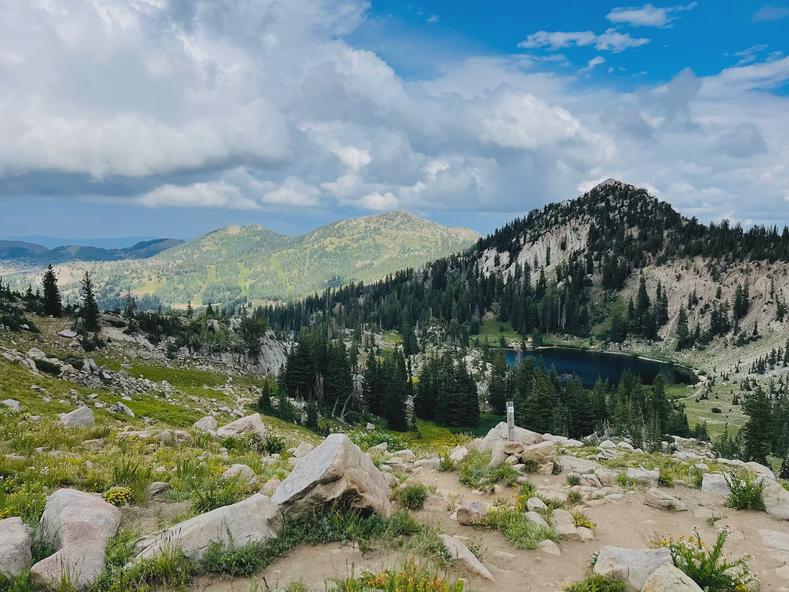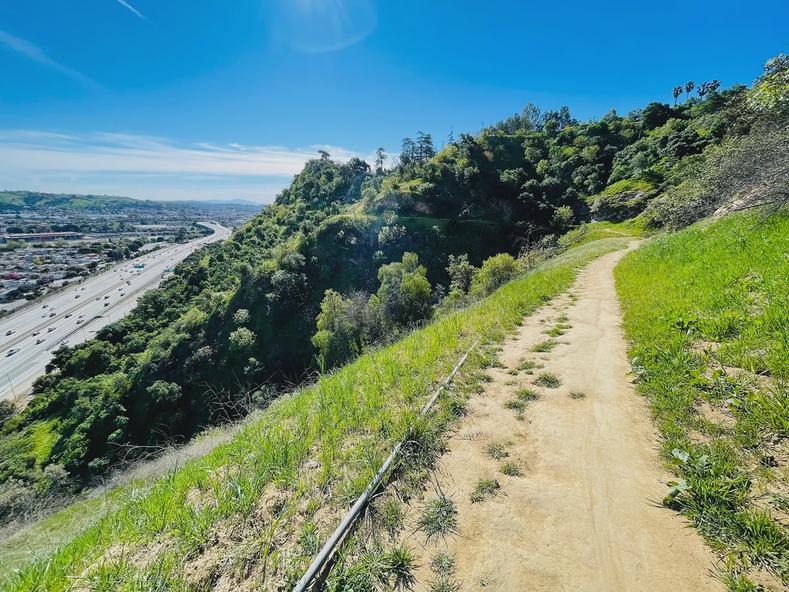Halfway at 1,000 Miles

For some reason in late December of 2021 I decided to give into the pressure of social media. This wasn’t Facebook or Instagram but rather on Strava, the bicycling and running tracking application. The virtues of this platform are lightyears ahead of what one might call normal social media. But there can still be a dark side, even with physical exercise. Some can use it as a platform of globalized hyper-competition or social comparison and consequently push themselves into physical overtraining injuries or in the case of William Flint pursuing a segment record in 2010, death1. On the Strava platform a segment is a virtual course that is competed over by users of the application for speed and number of efforts. If you aren’t the fastest in your area you could always try for the next best title of Local Legend for the raw number of attempts at a course. You can imagine this sort of virtual competition could amplify up rapidly in some cities.
While I consider myself physically fit I came to the realization long ago that there would always be someone faster or tougher than me. This is pretty apparent when I look at some local Strava segments and the associated fastest times. As I am only a few miles away from a nearby high school these segments are disproportionately quick and leave most individuals over 25 or 30 with little hope of retaking the segment as the fastest. Instead, I was brought into the lure of annual running mileage.

Once the end of the year rolls around, many Strava users share their yearly mileage. Consider it similar to a year end summary like Spotify does with listening habits. Its a fun way to brag to your peers and show some unique quirks about your individual habits. Some runners might showcase their altitude gains while on Spotify you could share that you listened to Never Gonna Give You Up over 100 times in the course of the previous 11 months. These posts on Strava gave me the hope that with an annual mileage goal I could sustain a running habit at a desired level without the need for a trail or road race at the end. I definitely needed the structure going forward with my mileage in the off-season showing up as a rollercoaster. Some weeks the motivation would hit and I’d ramp up to 30 or 45 miles over 7 days. The following week I’d be tired, the motivation would fade, or I just didn’t care enough because there was no end race goal in the training pipeline. Such thinking is especially easy to fall into when the temperature outside has been below freezing for the past few weeks or when it is pitch black at the only time you can fit a run into your schedule.
Armed with the general concept of an annual goal the only thing left was determining just exactly how much I should commit for the year. I have a habit of underestimating many things in my life so I thought it would be prudent to do an amount no more than a third more than what I had been doing the previous few years. Which was approximately 1,350 to 1,675 miles annually from about 2018 to 2021. We then end up at a figure of 2,000 miles for the year. I almost fell victim to further pressure from social media to increase that amount as most others were going for 2,500 or 3,000. Instead I held fast at my modest but ambitious goal. The objective was to improve my personal running consistency and not to compete against individuals most certainly in a different point in their running goals.

The beginning was pretty easy. There is a lot of energy in January from the New Year and the new habits of most around you. I tried to ride this wave as long as possible until the inevitable doldrums of February. Some weeks I barely hit the weekly minimum. But most people wouldn’t blame you for minimizing your exposure to sub-zero temperatures and freezing rain storms. I told myself that once summer rolled in it would be a much different story for weekly mileage. Being outside in June or July is a blessing while the same is a curse in January or February. March and April aren’t much better and can be risky in some cases. The weather can be quite pleasant in the early or mid-spring but a rogue thunderstorm can sharply lower the temperature and introduce dangerous conditions, especially in not carrying the required equipment. On one run in the early spring this year the weather was sunny and in the 60s. Off I went on a 10 mile run in shorts and a short sleeved shirt. However, about halfway through the run a thunderstorm snuck out from the other side of the mountains and lowered the temperature about 20-25 degrees with some extensive precipitation. By the time I made it back to my house I wasn’t able to perform basic tasks with my hands because they were so cold. In order to muster the motor skills to put the key in my door lock and turn it required several minutes of rubbing my arms and hands in an attempt to get them warmed up.

Towards the end of Spring I encountered the only sizable road block in my training with patellofemoral pain (Runner’s Knee). Normally my approach to training is pretty cautious and I always back off in mileage with any recurring pain. But with the weekly mileage goal it kept my efforts and a consistent high in a manner my body had never experienced. Additionally, in an effort to sort of cheat my way to high weekly mileage I was doing almost entirely road running. I say this is cheating since it most often involves almost no altitude gain or decline and requires little in the way of cognizant awareness when pumping out long runs. This method specifically backfired on me due to the repetitive nature of road running where as before I was frequently exposed to the variations of trail running. I say this as a description of your foot placement and terrain encountered over the course of a particular run. The amount of work your legs, hips, and feet do over the course of running an uneven and rocky trail is exponentially more than a flat, paved, and straight pathway. The lack of movement on road running can leave certain muscles, ligaments, and stabilizers neglected. Consequentially this can lead to unevenness in your legs and hips. After introducing trail running once a week back into my schedule and perform some targeted hip stabilizer routines2 I was able to reduce the pain entirely within about a month.
Once summer hit I had established my routine and mostly addressed any injuries. So I started experimenting with sizable weekly mileage increases up to 50 and in some cases 60 per week. I was pretty hesitant to approach 60 since the year prior I had gotten some random burst of motivation and peaked out of nowhere at 61 miles during late summer. However, this resulted in what I assume were stress fractures that spiraled the rest of the summer to less than 20 miles per week due to the pain. But this year was a bit different with my incredibly strong base mileage of about 40 per week. I decided to creep up using the 10% rule and regressing downward every third week for recovery. This method has proven invaluable for me and I can happily report that the 60 mile week was difficult but without lasting injury.

At the halfway point in my 2,000 mile goal I consider myself in a strong position to finish it out. This new style of running has transformed the act of running from an erratic aberration of activity to a consistent presence in my everyday life. I have begun to see the perspective of some runners who I had thought were previously a bit crazy for their random solo marathons in the mountains. Such acts are now within my physical capabilities and introduce new possibilities into outdoor adventure. I am planning on running the trail to the tallest peak in Utah, Kings Peak, in late August. The trail is between 24 to 27 miles and the average hiker covers it in a day or two of walking. While running certainly compacts the beautiful experience of traversing through nature I would consider it just a few more miles per hour away from the most basic method of hiking. I hope to carry this style of adventure forward, which could provide pristine access to a variety of outdoor locations.